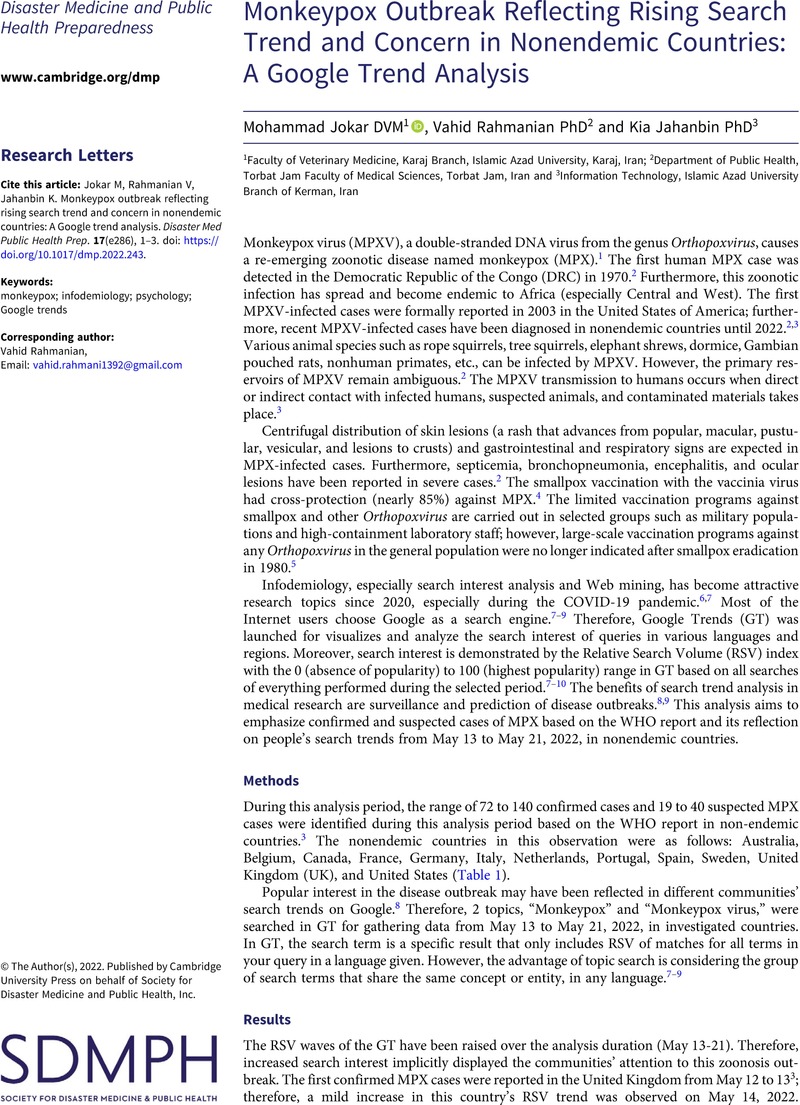Crossref Citations
This article has been cited by the following publications. This list is generated based on data provided by Crossref.
Bhagavathula, Akshaya Srikanth
and
Raubenheimer, Jacques E.
2022.
A Real-Time Infodemiology Study on Public Interest in Mpox (Monkeypox) following the World Health Organization Global Public Health Emergency Declaration.
Information,
Vol. 14,
Issue. 1,
p.
5.
Jokar, Mohammad
and
Rahmanian, Vahid
2023.
Potential use of Google Search Trend analysis for risk communication during the mpox (formerly monkeypox) outbreak in Iran.
Health Science Reports,
Vol. 6,
Issue. 1,
Jahromi, Abdolreza Sotoodeh
Jokar, Mohammad
Sharifi, Nader
Kashkooli, Sirus
Rahmanian, Karamatollah
and
Rahmanian, Vahid
2024.
Global knowledge and attitudes towards mpox (monkeypox) among healthcare workers: a systematic review and meta-analysis.
International Health,
Vol. 16,
Issue. 5,
p.
487.



